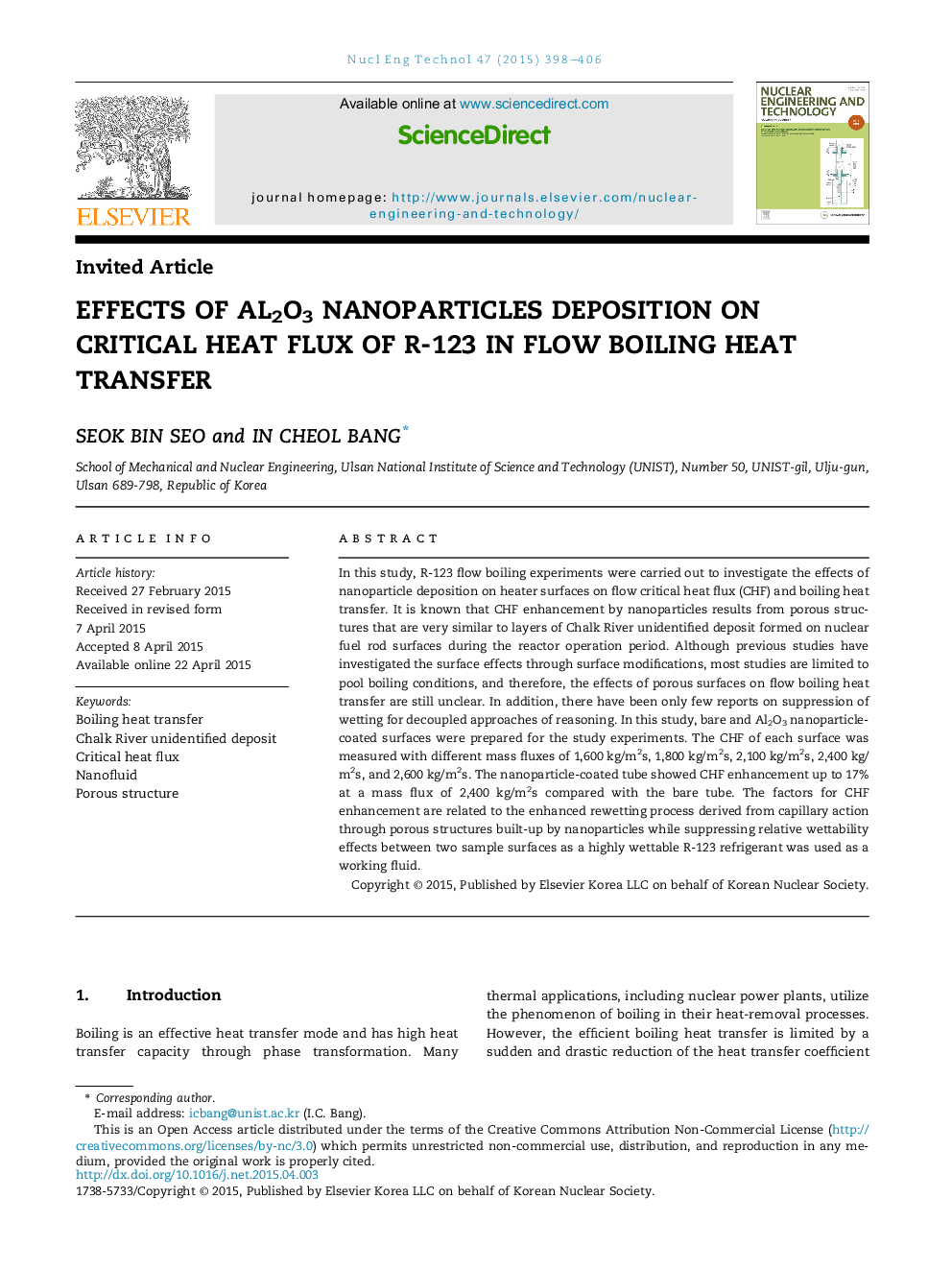| Article ID | Journal | Published Year | Pages | File Type |
|---|---|---|---|---|
| 1740143 | Nuclear Engineering and Technology | 2015 | 9 Pages |
In this study, R-123 flow boiling experiments were carried out to investigate the effects of nanoparticle deposition on heater surfaces on flow critical heat flux (CHF) and boiling heat transfer. It is known that CHF enhancement by nanoparticles results from porous structures that are very similar to layers of Chalk River unidentified deposit formed on nuclear fuel rod surfaces during the reactor operation period. Although previous studies have investigated the surface effects through surface modifications, most studies are limited to pool boiling conditions, and therefore, the effects of porous surfaces on flow boiling heat transfer are still unclear. In addition, there have been only few reports on suppression of wetting for decoupled approaches of reasoning. In this study, bare and Al2O3 nanoparticle-coated surfaces were prepared for the study experiments. The CHF of each surface was measured with different mass fluxes of 1,600 kg/m2s, 1,800 kg/m2s, 2,100 kg/m2s, 2,400 kg/m2s, and 2,600 kg/m2s. The nanoparticle-coated tube showed CHF enhancement up to 17% at a mass flux of 2,400 kg/m2s compared with the bare tube. The factors for CHF enhancement are related to the enhanced rewetting process derived from capillary action through porous structures built-up by nanoparticles while suppressing relative wettability effects between two sample surfaces as a highly wettable R-123 refrigerant was used as a working fluid.
